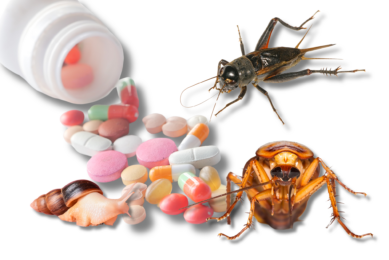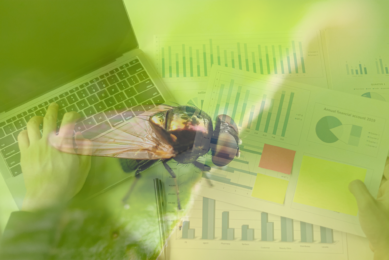The antimicrobial value of insects
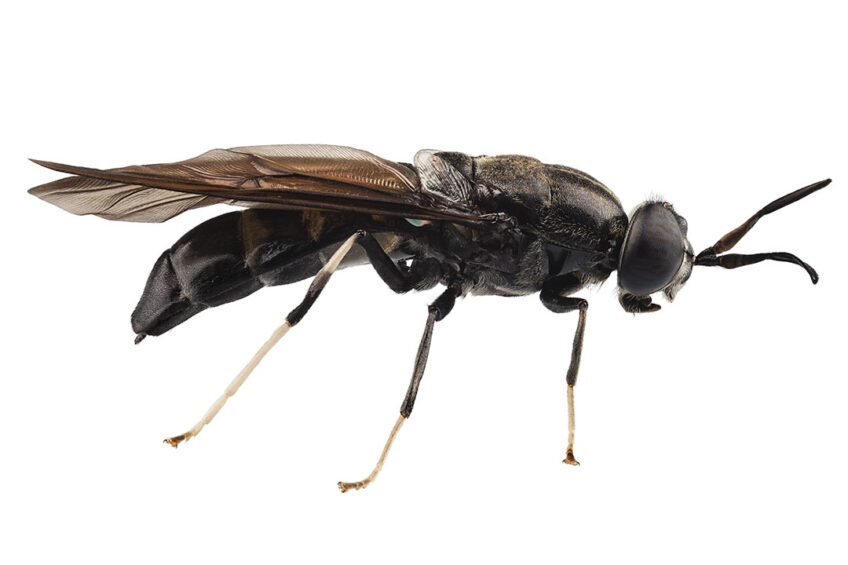
Insects are rich sources of antimicrobial compounds that could be explored as potential alternatives to antibiotics. In a study, researchers at the University of Parma shed light on the different antimicrobial properties that could be harnessed to improve the health and welfare of animals.
Sustainable nutrition and food security are the central focus of the global agenda supported by the United Nations Sustainable Development Goals. One of its aims is to feed safe, sufficient, and nutritious food to the ever-increasing world population. The irresistible feed-food competition draws attention towards the unveiling of new protein sources that could serve both human and animal needs.
What can insects offer to support animal health?
Insects are a promising feed source due to their high nutritional value and positive effects on animal health. But what exactly can they offer to support animal health? Evidence: the resilience of insects to infections by different parasites indicates they are an excellent type of biomass for the extraction of various antimicrobial compounds.
Stimulate the utilisation of insect antimicrobials
In this review, recently published in the journal Trends in Food Science & Technology, researchers differentiate intrinsic and extrinsic antimicrobials derived from insects in terms of their constituent components and metabolite production. Their findings are to stimulate the utilisation of insect antimicrobials to extend the market size of the sector, support the circular economy, contribute to environmental sustainability, and reduce antibiotic use.
Antimicrobial activity of insects
Interaction between bacteria and insects has recently attracted interest in the scientific community. On the one hand, some bacteria that colonise the insect body produce metabolites that are selectively toxic to invertebrates such as DNA-intercalating compounds. On the other hand, the insect gut microbiota produces a wide range of metabolites in defence against pathogenic bacteria. There are 2 lines of defence against pathogens:
The cuticle; a complex barrier mainly comprised of lipid and chitin with antimicrobial properties designed to prevent or retard the entry of pathogens,
The hemolymph; analogous to mammalian blood, is involved in transporting nutrients, waste products, and signal molecules, and contains cellular and humoral defence mechanisms responding to a variety of microorganisms.
These 2 lines of defence are defined as intrinsic and extrinsic according to the constitutive or inducible nature of the antimicrobial compounds (Figure 1). Intrinsic defence is represented by constitutive molecules of the body that possess antibacterial activity, while extrinsic defence is related to inducible metabolites synthesised in the body to counteract infections.
Figure 1 – Schematic representation of the insect immune system. The 2 lines of defence containing intrinsic and extrinsic antimicrobial activity are represented by body components and humoral response, respectively.
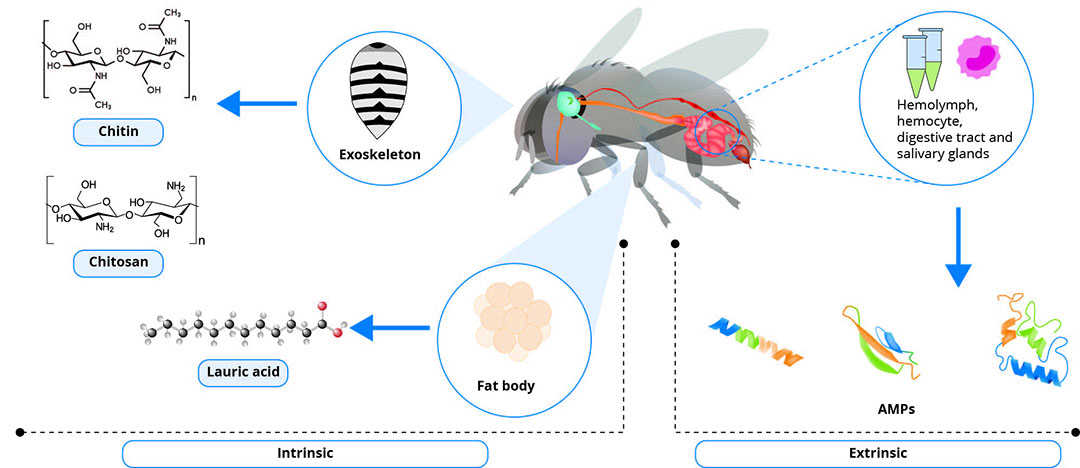
Intrinsic antimicrobial activity (body composition)
Insects are valuable sources of proteins, lipids, vitamins, and minerals. Their body composition differs according to the species, developmental stage, and growth substrate. For example, studies show that H. illucens larva are rich in protein, while the prepupa is high in lipid content, and the pupa has elevated chitin levels. H. illucens metabolises a large proportion of fatty acids into lauric acid, which has antimicrobial activity against gram-positive bacteria such as Clostridium perfringens.
Chitin, a naturally abundant linear polymer composed of N-acetylglucosamine is the main exoskeleton component in insects. Chitin may be converted into chitosan chemically or enzymatically by deacetylation which increases its antimicrobial activity.
Chitosan is the more potent antimicrobial version for 2 reasons:
it possesses positively charged amine groups which interact with components of the bacterial cell surface (lipids, proteins, carbohydrates) and
has high solubility – RNA and protein inhibition due to effective diffusion in microbial cells.
Although fatty acids (particularly lauric acid) and chitin/chitosan are the most researched intrinsic insect anti-microbial molecules, other compounds have been identified. For example, 1-lysophosphatidylethanolamine is a constitutive antimicrobial compound in the Musca domestica (housefly) membrane that is effective against gram-positive bacteria.
Figure 2 – The humoral response following a pathogen attack
involves the synthesis of various antimicrobial peptides (AMPs).
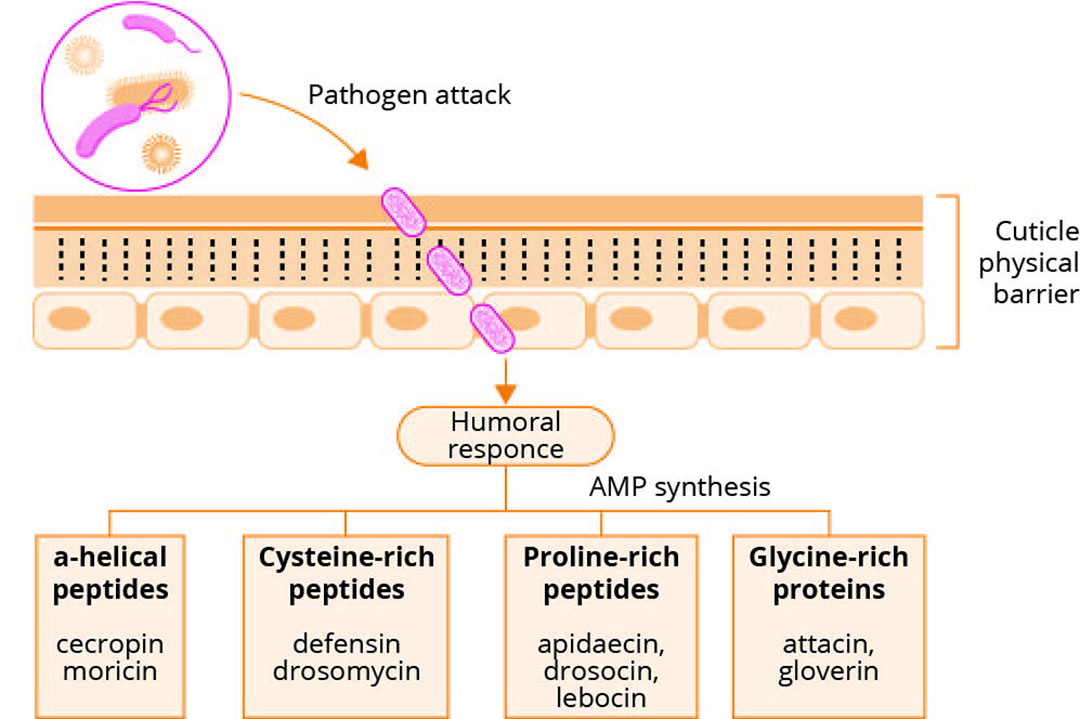
Extrinsic antimicrobial activity (AMP production)
The humoral response of insects involves the synthesis of a wide range of antimicrobial peptides (AMPs) in the fat body, haemocytes, digestive tract, salivary glands, and reproductive tract. Pathogen recognition by pattern recognition receptors leads to AMP release into the haemolymph. Studies show that these peptides have strong antibacterial and antifungal activities comparable to similar compounds present in vertebrates and plants. The common feature of AMPs is their small size and positive charge. Their mechanism of action depends on the type of AMP and the target pathogen. AMPs may interact with the microbial membrane surface, alter the permeability, and induce cell lysis, or enter the cell and damage bacterial components such as DNA and RNA.
The researchers suggested the use of insect AMPs in livestock production as feed supplements that are beneficial to animal health. They highlighted the fact that insect AMPs may be classified into 4 families based on their amino acid composition and secondary structures:
α-helical peptides (cecropin and moricin),
cysteine-rich peptides (defensin and drosomycin),
proline-rich peptides (apidaecin, drosocin, and lebocin), and
glycine rich proteins (attacin and gloverin).
It was further mentioned that cecropins, defensins, proline-rich peptides, and attacins are the common insect AMPs. Cecropins represent the most abundant linear α-helical AMPs in insects with antimicrobial activity against gram-positive and gram-negative bacteria, antifungal activity, and anti-inflammatory activity with their mode of action involving bacterial cell membrane lysis and inhibition of proline uptake.
Potential as antimicrobial sources in feed
The high nutrient value of insects as an alternative source of protein, fat, and several other compounds including micronutrients and chitin makes them a sustainable feed resource.
EU feed legislation has allowed the use of insects in feed for pets and aquaculture since July 2017, while live insects are permitted under national legislation in certain EU Member States for feeding fish, poultry, and pigs. More recently, as reported in an IPIFF report, the EU Member States voted positively on a draft regulation designed to enable the use of processed insect proteins in poultry and pig nutrition. The positive effects of using insect AMPs as feed supplements are expected to bring improvements in growth performance, and gut health. The researchers strongly believe that the antimicrobial compounds of insects described in this review may drive research into further exploration of their potential as animal-health-impacting feed additives.
Based on the original article by Jasmine Hadj Saadoun, Giovanni Sogari, Valentina Bernini, Chiara Camorali, Flavia Rossi, Erasmo Neviani, and Camilla Lazzi. 2022. A critical review of intrinsic and extrinsic antimicrobial properties of insects. Trends in Food Science & Technology 122: 40–48.





